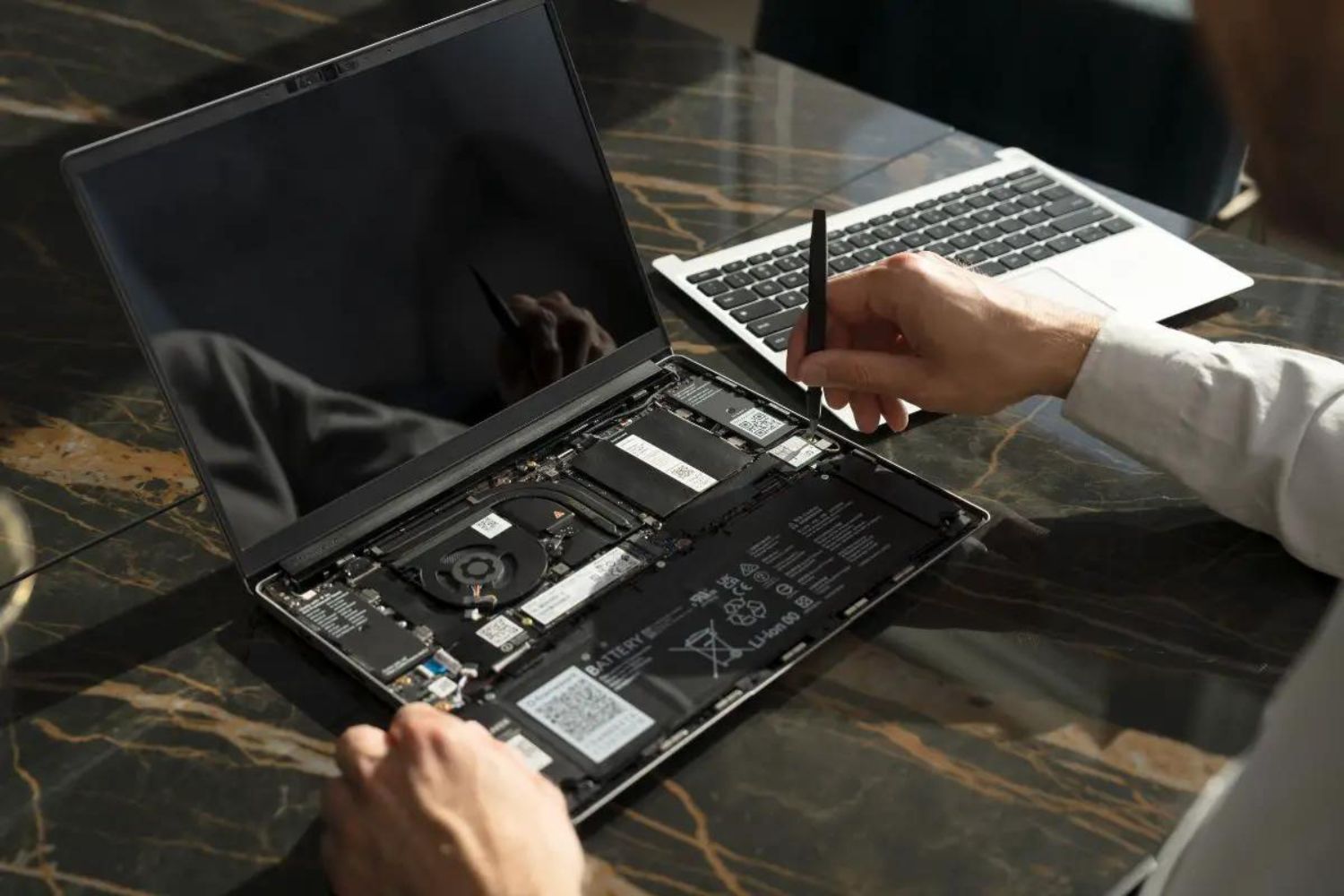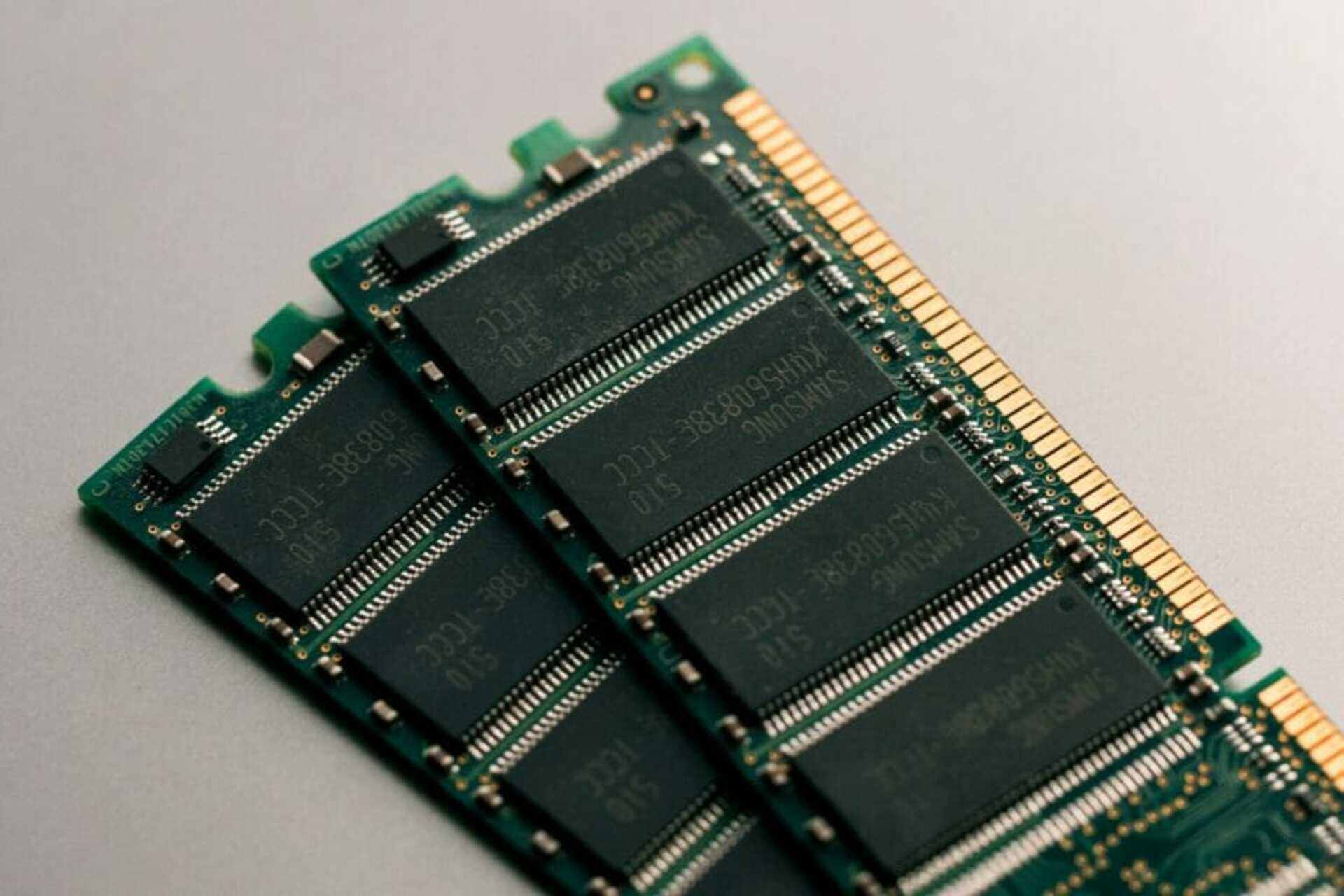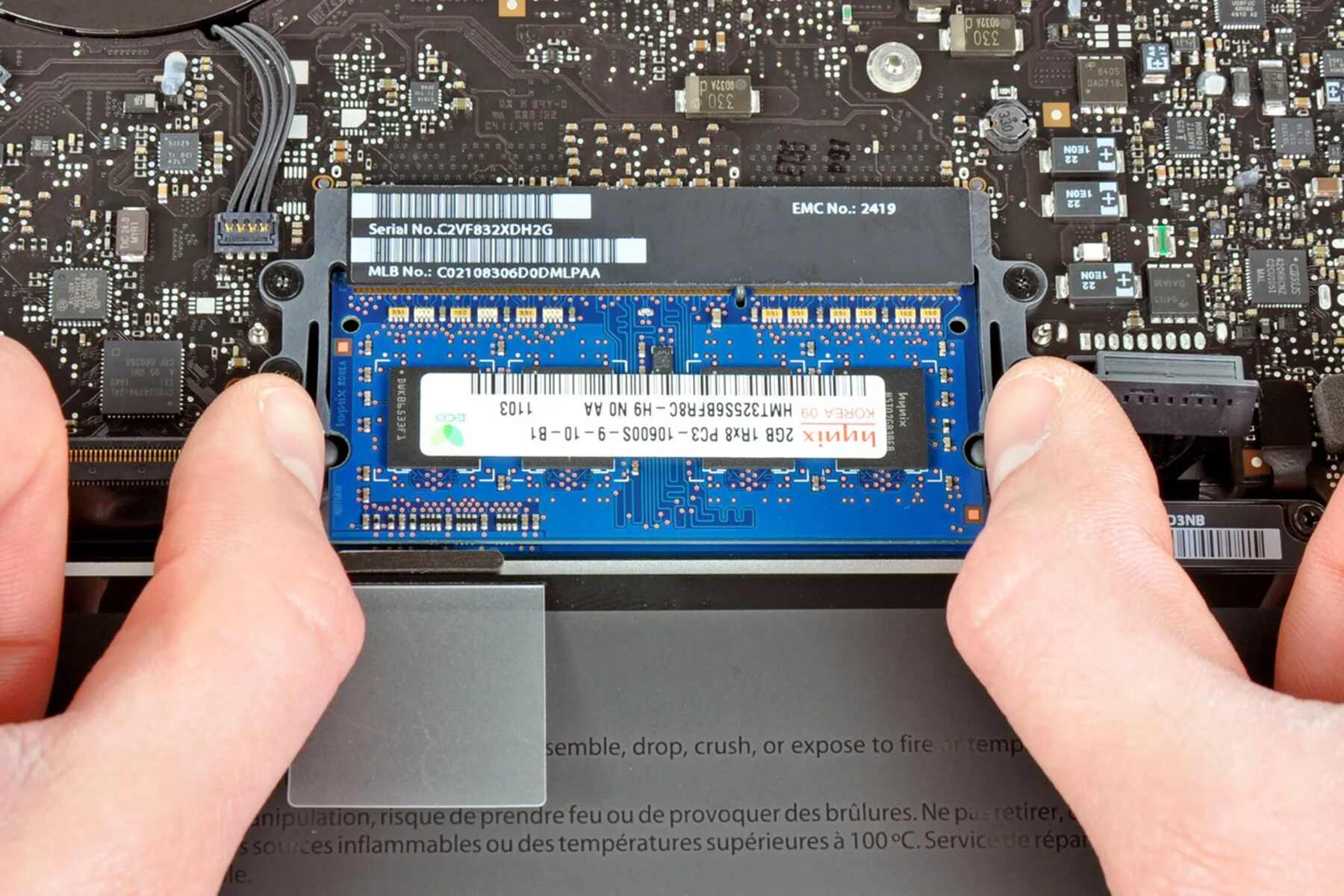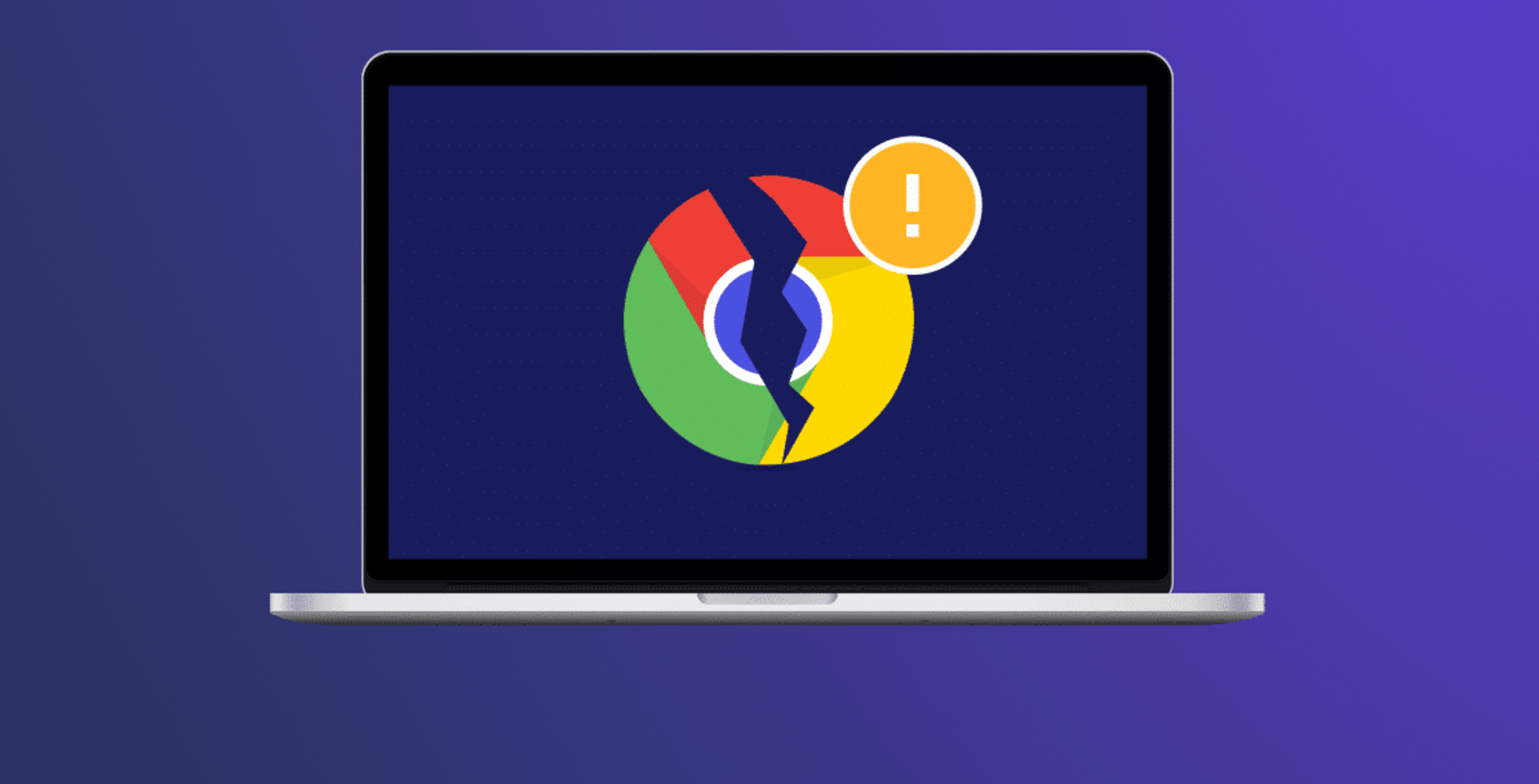Introduction
Chrome is undoubtedly one of the most popular web browsers in the world. Its fast performance, extensive features, and user-friendly interface make it a top choice for many internet users. However, one common issue that users often encounter is high RAM usage by Chrome.
RAM, short for Random Access Memory, is a vital component of your computer that stores and provides quick access to data that is actively being used by running programs. When Chrome consumes excessive RAM, it can slow down your computer’s performance and even lead to crashes.
High RAM usage in Chrome can be attributed to various factors such as memory leaks, excessive extensions, and multiple open tabs consuming resources. If you find your computer sluggish or notice Chrome using a significant amount of RAM, it’s crucial to address the issue to maintain optimal performance.
In this article, we will explore the causes of high RAM usage in Chrome and provide you with actionable tips to reduce it. By implementing these strategies, you can ensure that Chrome runs smoothly without putting an unnecessary strain on your computer’s memory resources.
What causes high RAM usage in Chrome?
Several factors can contribute to high RAM usage in Chrome. Understanding these causes will help you identify the root issues and take appropriate measures to reduce memory consumption. Here are some common culprits:
- Multiple open tabs: One of the primary reasons for high RAM usage in Chrome is having too many tabs open simultaneously. Each tab consumes memory, especially if they contain media-rich content such as videos or graphics. The more tabs you have open, the greater the strain on your computer’s resources.
- Memory leaks: Sometimes, Chrome experiences memory leaks, which occur when memory that is no longer needed is not released properly. This can result in a gradual increase in RAM usage over time and ultimately slow down your computer. Developers regularly release updates to fix such issues, so keeping Chrome up to date is essential in resolving memory leaks.
- Extensions: While Chrome extensions offer additional functionality and convenience, certain extensions can be resource-intensive and contribute to high RAM usage. Multiple and poorly optimized extensions can place a heavy burden on your system’s memory. It’s important to evaluate the necessity of each extension and consider disabling or removing any that are not essential.
- Background processes and plugins: Chrome runs various background processes and plugins, often to enhance user experience or provide additional functionality. However, some of these processes and plugins can consume a significant amount of RAM, particularly if they are not well-optimized. Closing unnecessary processes and disabling unused plugins can help minimize memory usage.
- Hardware limitations: It’s worth mentioning that high RAM usage can also occur due to hardware limitations. If your computer has a low amount of RAM to begin with, running resource-intensive tasks, including Chrome, can quickly push it to its limits. In this case, upgrading your system’s RAM may be necessary to alleviate memory issues.
By understanding these causes, you can now move on to the next section and explore how to check the RAM usage in Chrome.
How to check Chrome’s RAM usage
Before diving into methods to reduce Chrome’s RAM usage, it’s important to understand how to check the current RAM usage of your Chrome browser. Fortunately, Chrome provides a built-in task manager that allows you to monitor the memory usage of individual tabs and extensions. Here’s how you can access it:
- Open Chrome and click on the three-dot menu icon in the top-right corner of the window.
- From the dropdown menu, hover over the “More tools” option and select “Task Manager”.
- A task manager window will appear, displaying a list of all the tabs, extensions, and processes running in Chrome.
- Check the “Memory” column to see the amount of RAM being utilized by each tab and extension.
By monitoring the RAM usage using the task manager, you can quickly identify which tabs or extensions are consuming excessive memory and take appropriate actions to address the issue. Close any unnecessary tabs or disable resource-intensive extensions to free up memory and improve Chrome’s performance.
Now that you know how to check Chrome’s RAM usage, let’s move on to the next section, where we will explore effective tips to reduce Chrome’s memory footprint and optimize its performance.
Tips to reduce Chrome’s RAM usage
Experiencing high RAM usage in Chrome can be frustrating, but there are several practical steps you can take to minimize memory consumption and improve the browser’s overall performance. Here are some effective tips to reduce Chrome’s RAM usage:
- Update Chrome to the latest version: Keeping Chrome up to date ensures that you have the latest bug fixes and performance improvements. These updates often include optimizations that can help reduce memory usage, so make sure to regularly check for and install any available updates.
- Disable unnecessary extensions: Extensions can significantly impact Chrome’s memory usage. Disable or remove any extensions that you no longer need or use frequently. Additionally, consider using extension alternatives or built-in browser features to minimize the number of extensions you rely on.
- Avoid opening too many tabs: As mentioned earlier, each open tab consumes memory, so try to limit the number of tabs you have open simultaneously. Consider using bookmarking or tab-saving extensions to store important pages you may need later instead of keeping them open all the time.
- Enable Chrome’s “Tab Discarding” feature: Chrome has a feature called “Tab Discarding” that automatically suspends inactive tabs to free up memory. To enable this feature, type “chrome://flags” in the address bar, search for “Tab Discarding,” and set it to “Enabled.” However, keep in mind that this feature may cause slight delays in reloading tabs when you switch back to them.
- Use Chrome’s built-in Task Manager to identify resource-intensive processes: As mentioned earlier, Chrome’s Task Manager can help you identify tabs and extensions that are consuming excessive memory. Keep an eye on the task manager and close any memory-hogging tabs or extensions to free up resources.
- Clear browsing data regularly: Over time, Chrome accumulates browsing data such as cache, cookies, and history, which can contribute to increased memory usage. Regularly clearing this data can help keep Chrome’s memory consumption in check. To do this, click on the three-dot menu icon, go to “Settings,” navigate to “Privacy and security,” click on “Clear browsing data,” and select the data types you want to clear.
- Adjust Chrome’s settings to use less memory: Chrome provides options to adjust settings that can help reduce memory usage. For example, you can enable the “Preload pages for faster browsing and searching” setting to speed up page loading but at the cost of more memory usage. To access these settings, go to Chrome’s settings page and navigate to the “Privacy and security” section.
By following these tips, you can optimize Chrome’s memory usage and have a smoother browsing experience without the frustration of lagging or slow performance.
Update Chrome to the latest version
One of the most effective ways to reduce Chrome’s RAM usage is by ensuring that you are running the latest version of the browser. Browser updates often include bug fixes, security patches, and performance optimizations, which can help improve memory usage. Here’s how you can update Chrome to the latest version:
- Open Chrome and click on the three-dot menu icon in the top-right corner of the window.
- From the dropdown menu, hover over the “Help” option, and then click on “About Google Chrome”.
- Chrome will automatically check for updates and display the current version you are using.
- If an update is available, Chrome will start downloading and installing it.
- Once the update is complete, relaunch Chrome to apply the changes.
By keeping Chrome up to date, you ensure that you have the latest bug fixes and performance improvements, including optimizations that reduce memory usage. Regularly checking for updates and installing them promptly will help optimize Chrome’s performance and minimize RAM consumption.
Now that you have updated Chrome to the latest version, let’s move on to the next section, where we will discuss how to disable unnecessary extensions to further reduce RAM usage.
Disable unnecessary extensions
Extensions are a great way to enhance the functionality of Chrome, but having too many extensions can contribute to high RAM usage. Each extension runs in the background and consumes system resources, including memory. Disabling unnecessary or rarely used extensions can help reduce Chrome’s memory footprint. Here’s how you can disable extensions:
- Open Chrome and click on the three-dot menu icon in the top-right corner of the window.
- From the dropdown menu, hover over “More tools” and select “Extensions”.
- A new tab will open, displaying all the installed extensions.
- Review the list of extensions and identify the ones that you no longer need or use frequently.
- To disable an extension, toggle off the switch next to it.
It’s important to evaluate the necessity of each extension to ensure that you are only keeping the ones that you truly find useful. Disabling unnecessary extensions not only reduces memory usage but also improves Chrome’s overall performance and loading times.
In addition to disabling extensions, it’s worth considering alternative options or built-in features provided by Chrome. Some functionalities offered by extensions may have native support within Chrome, eliminating the need for additional memory-consuming extensions.
Remember, you can always enable an extension again in the future if you find that you need it. Regularly reviewing and managing your extensions will help keep Chrome lean and optimize its RAM usage.
Now that you have disabled unnecessary extensions, let’s move on to the next section, where we will explore how to avoid opening too many tabs to further reduce Chrome’s RAM usage.
Avoid opening too many tabs
It’s easy to get carried away and open multiple tabs while browsing, but each open tab consumes system resources, including memory. Keeping numerous tabs open simultaneously can contribute to high RAM usage in Chrome. To minimize memory consumption, it’s essential to practice tab management and avoid opening too many tabs. Here are some tips to help you:
- Prioritize essential tabs: Identify the tabs that you need to have open for immediate access and prioritize them. Keep these tabs open and close the ones that you can live without or revisit later.
- Use bookmarks: Instead of keeping a tab open for a page that you frequently visit but don’t need instant access to, consider bookmarking it. Bookmarks allow you to quickly navigate to your favorite websites without the need to keep them open as tabs.
- Utilize tab-saving extensions: Some extensions, such as “OneTab” or “The Great Suspender,” allow you to consolidate and save tab sessions for later use. These extensions help free up memory by suspending inactive tabs while still keeping them accessible for future reference.
- Regularly close unused tabs: Get into the habit of closing tabs that you no longer need. This can be done by either clicking on the close button (X) on individual tabs or using the keyboard shortcut Ctrl+W (Windows) or Command+W (Mac) to close the current tab.
By being mindful of your tab usage and closing unnecessary tabs, you can significantly reduce Chrome’s RAM usage. Not only will this free up memory resources, but it will also improve Chrome’s overall performance, making your browsing experience smoother and more efficient.
Now that you have learned the importance of managing your tabs, let’s move on to the next section, where we will explore how to enable Chrome’s “Tab Discarding” feature to further optimize memory usage.
Enable Chrome’s “Tab Discarding” feature
Chrome offers a feature called “Tab Discarding” that automatically suspends inactive tabs to free up memory and reduce RAM usage. Enabling this feature can be beneficial if you often find yourself with multiple tabs open but not actively using all of them. Here’s how you can enable Chrome’s “Tab Discarding” feature:
- Type “chrome://flags” into the address bar and press Enter. This will take you to Chrome’s experimental features page.
- In the search bar on this page, type “Tab Discarding”. This will quickly locate the relevant flag.
- Next to the “Tab Discarding” flag, you will see a dropdown menu. Click on the menu and select “Enabled”.
- Restart Chrome to apply the changes.
With the “Tab Discarding” feature enabled, Chrome will automatically suspend inactive tabs after a certain period of time, freeing up memory for tabs that are actively being used. When you switch back to a suspended tab, Chrome will reload it, although there might be a slight delay while it restores the tab’s contents.
Please note that enabling “Tab Discarding” may cause tabs to reload when you switch back to them, so consider your browsing habits and the importance of each tab before enabling this feature. It can be particularly useful if you often have many tabs open at once, helping to reduce memory usage and improve Chrome’s performance.
Now that you have enabled Chrome’s “Tab Discarding” feature, let’s move on to the next section, where we will discuss how to use Chrome’s built-in Task Manager to identify resource-intensive processes and manage them efficiently.
Use Chrome’s built-in Task Manager to identify resource-intensive processes
Chrome comes with its own built-in Task Manager that allows you to monitor and manage the different processes and tabs running within the browser. By utilizing the Task Manager, you can identify resource-intensive processes that might be contributing to high RAM usage. Here’s how you can use Chrome’s Task Manager:
- Click on the three-dot menu icon in the top-right corner of Chrome.
- From the dropdown menu, hover over “More tools” and select “Task Manager”.
- A new window will open, displaying a list of running processes, tabs, and extensions within Chrome.
- Review the list and check the “Memory” column, which shows the amount of memory consumed by each process or tab.
- If you identify any processes or tabs that are using an excessive amount of memory, you can take action to manage them:
- Close tabs: If a tab is consuming a significant amount of memory and is no longer needed, you can click on it in the Task Manager and click the “End Process” button to close it.
- Disable or remove extensions: If an extension is using excessive memory, you may consider disabling or removing it through the Extensions page.
Utilizing the Task Manager can help you identify and address memory-hogging processes, allowing you to free up memory and optimize Chrome’s performance. Regularly monitoring the Task Manager can also provide insights into your browsing habits and help you make informed decisions about managing tabs and extensions.
Now that you know how to use Chrome’s built-in Task Manager effectively, let’s move on to the next section, where we will discuss the importance of regularly clearing browsing data to reduce Chrome’s memory footprint.
Clear browsing data regularly
Over time, Chrome accumulates various forms of browsing data such as cached files, cookies, and browsing history. This data can contribute to increased RAM usage and affect Chrome’s performance. Clearing this data regularly is an effective way to reduce Chrome’s memory footprint. Here’s how you can clear browsing data:
- Click on the three-dot menu icon in the top-right corner of Chrome.
- From the dropdown menu, hover over “History” and select “History” again from the expanded menu. Alternatively, you can use the keyboard shortcut Ctrl+H (Windows) or Command+Y (Mac).
- On the left-hand side of the History page, click on “Clear browsing data”.
- A new window will appear with a list of data types you can choose to clear. Select the appropriate checkboxes based on your preferences.
- Ensure the “Cached images and files” and “Cookies and other site data” options are selected to clear the most memory-intensive data.
- Click on the “Clear data” button to initiate the clearing process.
Clearing your browsing data regularly not only frees up memory but also helps improve privacy and security. By removing unnecessary files and data, you can optimize Chrome’s performance and provide a better browsing experience.
Additionally, Chrome provides options to customize the time range for clearing browsing data. You can choose to clear data from the past day, week, month, or even select a specific time range to fit your needs. Customizing the time range allows you to balance memory optimization with retaining relevant browsing data.
Now that you understand the importance of regularly clearing browsing data, let’s proceed to the next section, where we will explore how to adjust Chrome’s settings to use less memory.
Adjust Chrome’s settings to use less memory
Chrome offers several settings that you can adjust to optimize memory usage and reduce the strain on your computer’s resources. By making a few tweaks, you can ensure that Chrome operates efficiently while consuming less memory. Here are some settings you can adjust:
- Preload pages for faster browsing and searching: This setting allows Chrome to predict and pre-load web pages to speed up browsing. However, it can consume more memory. You can disable this feature by going to Chrome’s settings, clicking on “Privacy and security,” and toggling off the “Preload pages for faster browsing and searching” option.
- Hardware acceleration: Chrome utilizes hardware acceleration to offload some tasks to the GPU, enhancing performance. However, this can sometimes lead to increased memory usage. You can toggle off hardware acceleration by going to Chrome’s settings, clicking on “Advanced,” scrolling down to the “System” section, and disabling the “Use hardware acceleration when available” option.
- Content settings: Adjusting content settings can also help reduce memory usage. By blocking certain types of content such as ads, plugins, and pop-ups, you can prevent memory-intensive elements from being loaded. To access content settings, go to Chrome’s settings, click on “Privacy and security,” and choose “Site settings” to configure content preferences.
- Automatic tab discarding: As mentioned earlier, enabling Chrome’s “Tab Discarding” feature can automatically suspend inactive tabs to free up memory. To enable this feature, access the Chrome flags page by typing “chrome://flags” in the address bar, search for “Automatic tab discarding,” and set it to “Enabled” to activate the feature.
- Disable background tabs: Chrome provides an option to disable tabs running in the background when you have multiple windows open. To enable this, go to Chrome’s settings, click on “Advanced,” scroll down to the “System” section, and enable the “Continue running background apps when Google Chrome is closed” option. This prevents background tabs from consuming additional memory.
By adjusting these settings, you can customize Chrome’s behavior to use less memory without sacrificing essential functionality. Experiment with different settings and find the optimal configuration that works best for you and your system.
Now that you’ve learned how to adjust Chrome’s settings to use less memory, it’s time to wrap up this article. Take these tips and implement them to reduce Chrome’s RAM usage, optimize its performance, and enjoy a smoother browsing experience.
Conclusion
High RAM usage in Chrome can significantly impact your computer’s performance and slow down browsing. However, by implementing the tips and strategies outlined in this article, you can reduce Chrome’s memory footprint and optimize its performance. Let’s recap the key points:
We started by understanding the causes of high RAM usage in Chrome, such as multiple open tabs, memory leaks, excessive extensions, background processes, and hardware limitations. Identifying these factors helped us address the root causes and find effective solutions.
We then explored various techniques to reduce Chrome’s RAM usage. Updating Chrome to the latest version ensures you have the latest bug fixes and performance improvements. Disabling unnecessary extensions, avoiding opening too many tabs, and enabling Chrome’s “Tab Discarding” feature help minimize memory consumption. Using Chrome’s built-in Task Manager allows you to identify and manage resource-intensive processes and tabs efficiently. Regularly clearing browsing data removes accumulated files and helps maintain optimal memory usage. Adjusting Chrome’s settings, such as disabling hardware acceleration and adjusting content settings, can further optimize memory usage.
By following these recommendations, you can enhance Chrome’s performance, reduce memory usage, and enjoy a smoother browsing experience. It’s important to customize these strategies based on your needs and computer’s specifications.
Remember to regularly review and optimize your browsing habits, keep your browser and extensions updated, and clear unnecessary data to maintain Chrome’s efficiency.
With these tips in mind, you are now equipped to tackle high RAM usage in Chrome and optimize its performance. Apply these techniques to ensure a faster, more responsive browsing experience while conserving your computer’s valuable resources.

























